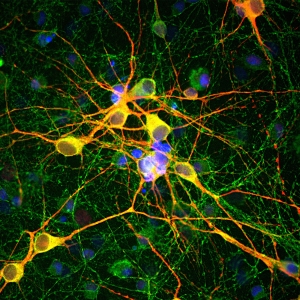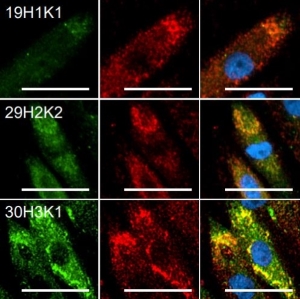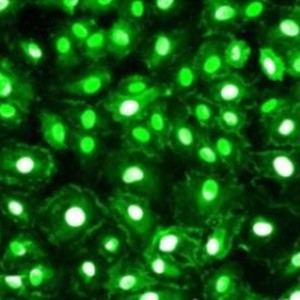Product Details
Product Sizes
| Size | List Price | Price | Cart |
|---|---|---|---|
| 100 ul | $303.00 | Add to Cart |
α-internexin is a Class IV intermediate filament protein originally discovered by two different groups of researchers as it copurifies with NF-L, NF-M and NF-H, the then better known major neurofilament “triplet” subunits. It is expressed only in neurons and in large amounts early in neuronal development, but is down-regulated in many neurons as development proceeds. Some neurons express α-internexin in the absence of NF-L, NF-M and NF-H, though most mature neurons express all four proteins. This α-internexin antibody has been shown, in peer reviewed publications, to reveal the upregulation of α-internexin in facial neurons following experimental axotomy followed by down regulation on axonal regeneration. It is also the standard reagent used to identify and classify patients with neurofilament inclusion body disease, a specific form of frontotemporal lobar dementia. Finally, it has been used to confirm the presence of circulating antibodies to α-internexin in the blood of certain patients with endocrine autoimmunity. |
Images
Immunofluorescent analysis of rat cerebellum section stained with mouse mAb to α-internexin, MO22102, dilution 1:5,000 in green, and costained with chicken pAb to calretinin 1:2,000 in red. Following transcardial perfusion of rat with 4% paraformaldehyde, brain was post fixed for 24 hours, cut to 45μM, and free-floating sections were stained with the above antibodies.
Western blot analysis of different tissue lysates using mouse mAb to α-internexin dilution 1:10,000 in green: [1] protein standard, [2] rat brain, [3] rat spinal cord, [4] mouse brain, [5] mouse spinal cord, [6] pig spinal cord and [7] cow spinal cord.






